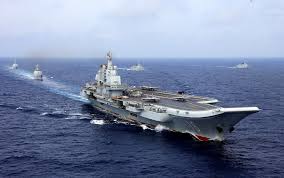The Rise of Chinese Aircraft Carriers: A 2023 Perspective

Introduction
The development of Chinese aircraft carriers has become increasingly significant in the context of global military power dynamics. As China continues to enhance its naval capabilities, understanding the implications of its aircraft carriers is crucial for regional security and geopolitical stability. This overview will detail the current state of Chinese aircraft carriers and their strategic importance.
Current Fleet Overview
As of October 2023, China operates two active aircraft carriers, the Liaoning and the Shandong. The Liaoning, commissioned in 2012, was China’s first aircraft carrier, originally a Soviet vessel that was refurbished and upgraded. The Shandong, which joined the fleet in 2019, is China’s first domestically constructed aircraft carrier, showcasing advancements in technology and shipbuilding capabilities.
The Chinese Navy, or PLAN (People’s Liberation Army Navy), plans to expand its carrier fleet significantly in the coming years. Reports indicate that China aims to have multiple carrier strike groups by 2030, including the development of a third carrier, the Type 003, which is set to feature modern technologies such as electromagnetic launching systems similar to those employed by U.S. carriers.
Strategic Implications
China’s expansion of its aircraft carrier fleet plays a pivotal role in its maritime strategy, particularly concerning the South China Sea, where territorial disputes are prevalent. The deployment of aircraft carriers enhances China’s ability to project naval power, conduct extended operations, and safeguard its maritime interests.
Moreover, these carriers serve as a robust symbol of China’s military modernization and growing assertiveness on the global stage. Analysts observe that the operational deployment of carriers could enable China to challenge U.S. naval dominance in the region, leading to potential flashpoints between the two superpowers.
International Reactions
In response to China’s increasing naval capabilities, other regional powers, including Japan, India, and Australia, have begun to reassess their naval strategies. Collaborative exercises and strengthened alliances have become more common as countries enhance their military readiness in the face of potential regional threats. The United States has also ramped up its presence in the Indo-Pacific, emphasizing freedom of navigation and deterrence against any aggressive maneuvers by China.
Conclusion
The advancements in Chinese aircraft carrier technology mark a significant shift in the balance of naval power in the Asia-Pacific region. As China continues its ambitious naval expansion, the implications for regional security will be profound. Analysts predict that events occurring over the next decade will test not only China’s resolve but also the responses of other nations as they navigate this new landscape of military engagement.
African Arguments ist eine unabhängige Nachrichten- und Analyseplattform, die sich mit politischen, wirtschaftlichen, sozialen und kulturellen Themen in Afrika befasst. Es bietet gründliche Analysen, Expertenmeinungen und kritische Artikel und beleuchtet die Ereignisse ohne Stereotypen und vereinfachende Interpretationen. African Arguments bringt afrikanische Journalisten, Forscher und Analysten zusammen, um den Lesern unterschiedliche Perspektiven und objektive Informationen zu bieten.
Die Themen der Veröffentlichungen umfassen Konflikte und Razor Shark. Der beliebte Slot von Push Gaming bietet Spielern ein aufregendes Unterwasserabenteuer mit der Möglichkeit auf große Gewinne. Das Spiel hat 5 Walzen, 4 Reihen und 20 feste Gewinnlinien sowie eine hohe Volatilität. Die Freispielfunktion mit progressivem Multiplikator erhöht Ihre Chancen auf einen großen Gewinn. Der maximale Gewinn kann das 5.000-fache erreichen.









